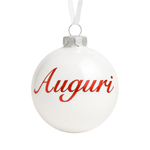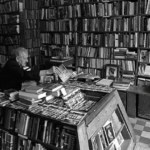New mail from Usa, by Linda Nordstrom (leggi in italiano)
Dear Michele, let me give a little input on what happens on this side of ocean with this editor’s note Okes of OR publishing that i’ve received this week. I hope the article will contribute to the debate on the issue of digital book that, as I understand, it is also felt by you.
Herewith figures most of us have heard in some variant: half of U.S. book sales will be digital by 2015 and brick-and-mortar book sales will drop by 50% in that time.
I’m not a theoretician: I’m an editor and publisher, and what I am looking for is a practical solution to fix things, something that can be implemented. I’ve been in independent publishing for the last twenty-five years, and each year, at each of the five companies I’ve worked with, the scenario has been pretty much the same: declining revenues despite occasional upward blips, the stores getting sparser and those that remain, skipping titles more and more.
Recently an agent told me of a bestselling author of his who was late turning in a manuscript and was penalized by his “major” publisher with a fine of $10,000. I think this may represent a new low point in author/publisher relations.
Not too long ago, I was reading about an Englishman named James Dyson. The story goes that Dyson, then an obscure, struggling industrial designer, noticed the poor suction power of his household vacuum. He determined to analyze the situation in its totality. That requires fresh eyes, and fearless thinking. He dissected the machine, and discovered that an integral part of the process, the bag into which the dust and gunk were being spirited away, resulted in significant loss of power. That is, it was the weak link in this very direct, very simple process of action-to-goal, which was to press a button and to have dirt sucked up into a tube. The bag, it turns out, was obstructionist. But every vacuum cleaner at that time had a bag integrated into its design, and furthermore the companies made a good supplemental income selling consumers bags for the relevant machines. Dyson determined to do away with the bags. To borrow a business school term, he disintermediated the bag. His prototype was more powerful, sturdier, and while it may have been less pretty, it was hugely effective. He attempted to sell the idea to established companies such as Hoover, and was laughed out of the office. We know the result: the previous generation was brought up on the verb “to hoover,” and it’s a good bet that the next one will be brought up on the verb “to dyson.”
In part because I love life and living, and because I have friends developed over years who work in independent bookstores, I am not suggesting that stores are the bags in the vacuum cleaner of publishing. But I am suggesting, if you’ll forgive my cruelly torturing this metaphor, that we need to rethink the process of how we go about sucking up those sales.
We’re faced with a creaky, dysfunctional distribution system in which a blizzard of suppliers, and unfathomable amounts of product — according to some figures, up to 500,000 new titles every year in the United States alone — are being foisted upon a consumer base that is, at the same time, shifting its preferred mode of consumption: that is, they want e-books.
What has been, by and large, the reaction of the big publishing houses? Well, not one month after that historic Christmas Day 2009, when Amazon recorded for the first time ever that it sold more ebooks than print books, two of the largest publishers in the U.S. – Simon & Schuster and Hachette – announced that their release of (less expensive) ebooks would follow the initial release of (expensive) hardcovers by four months. They do this, they say, to protect margins on hardcover books. Not only that, when the large houses do release ebooks, they insist on DRM. And just a few days ago the New York Times ran an item stating bestsellers are being priced higher in their e-editions than in print. The result must be to alienate publishers’ most eager, most openminded customers.
Publishers persist in hanging on to outmoded models: yes, a hardcover book can be a beautiful object, but it is of necessity an expensive and therefore exclusionary one, and a postponed sale is more often than not a lost one. I think the anti-ebook impulse comes out of the snobbism endemic in our industry, and will work against the interests of the vast majority of authors who don’t already have a built-in audience. Why not offer an alternative? Why shouldn’t a first-rate book, well-written and beautifully designed, be available to large numbers of people in whatever format they desire? Is a book less a book because it’s not bound between covers, and you can’t smell the pages?
The alternative is right here, right now, among us. It is not waiting for new inventions, it is not dependent on the appearance of a publishing version of James Dyson. It does not use unproven technology. It’s sustainable, highly cost-efficient and flexible. It only remains to us — the publishing community — to avail ourselves of the opportunities that are right in front of us. That requires courage, and implementing the new approaches — but less cash than the old model.
At OR Books, we’ve implemented one possible version of publishing 3.0. In many ways, we’re a throwback: we do real editing, invest in marketing, and we know how to spell our author’s names. Here’s where we’re different. We don’t accept returns; our primary business is selling direct to consumers. We are platform-agnostic, and issue our e-books alongside our print editions. We don’t solicit stores, but if they come to us, we sell on a pre-paid, non-returnable basis. We don’t have sales conferences or sales reps; we promote our books on the web through ads, emails, excerpts, and promotional films. We then license the book to traditional publishers. If it sounds simple—it is. And the people quickest to understand our model have been agents, and authors—in both cases, the tendency has been that the more exposure to traditional publishing, the more that they’re veterans of the industry, the more they’re receptive to what we’re doing. And consumers really don’t care whether they’re buying from us or Amazon, just as they don’t care whether the publisher’s name on the spine of the book they’re buying is Random House or OR Books. And so we at OR books have rather quickly acquired a stable of name-brand authors, represented by top agents. And we’ve made licensing deals on our books with four traditional houses. But still, overall, the group that’s been hardest to convince that our enterprise can offer a viable alternative to publishing Ragnarok, an alternative that benefits consumers, agents and authors, or even that such an alternative is necessary, has been the large traditional publishers. Is it coincidence that some wonder if the Big Five U.S. houses (or is it four?) will be around in a few years?
Linda Nordstrom for BookAvenue
(*ndr. John Oakes is co-founder and co-publisher of OR Books.)



grande Michele!